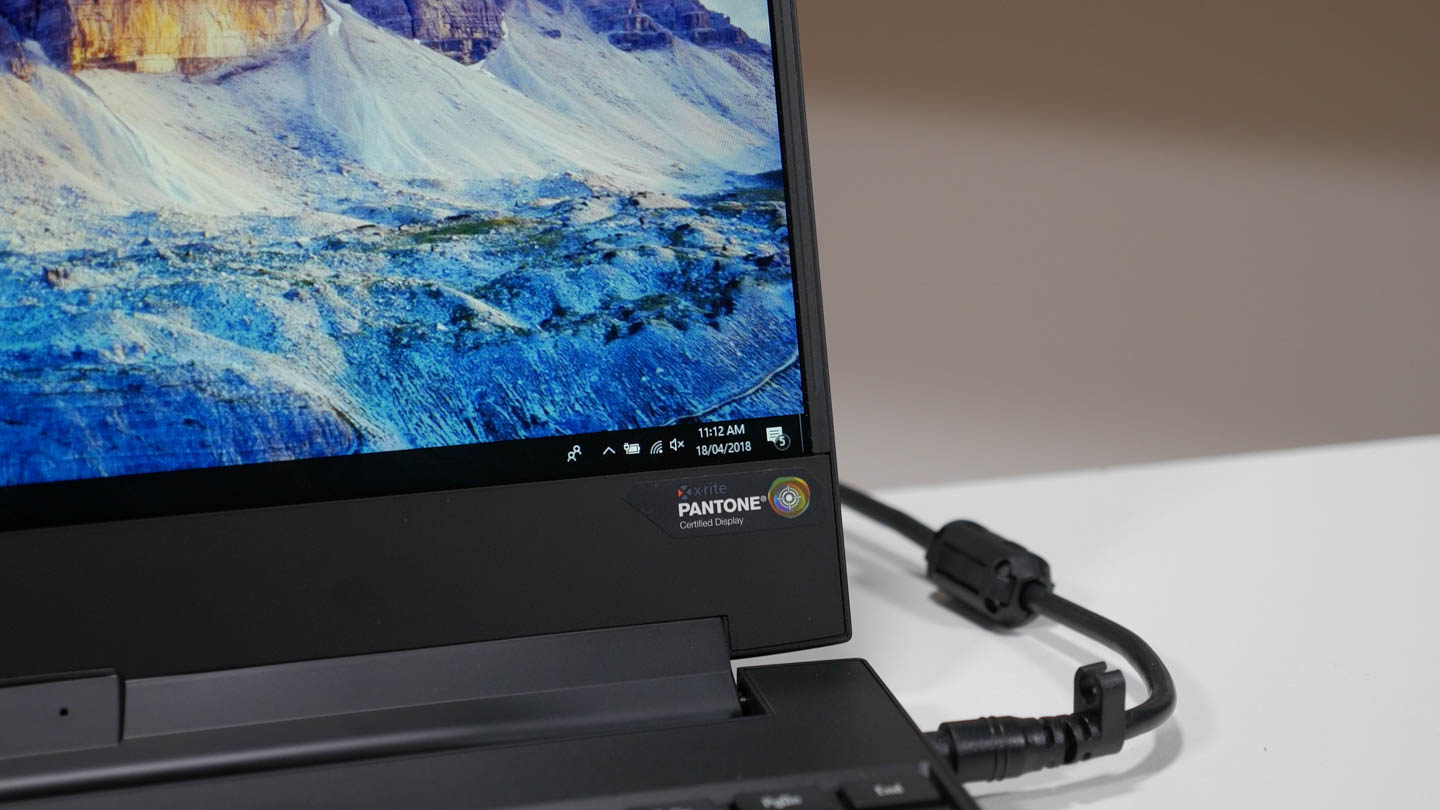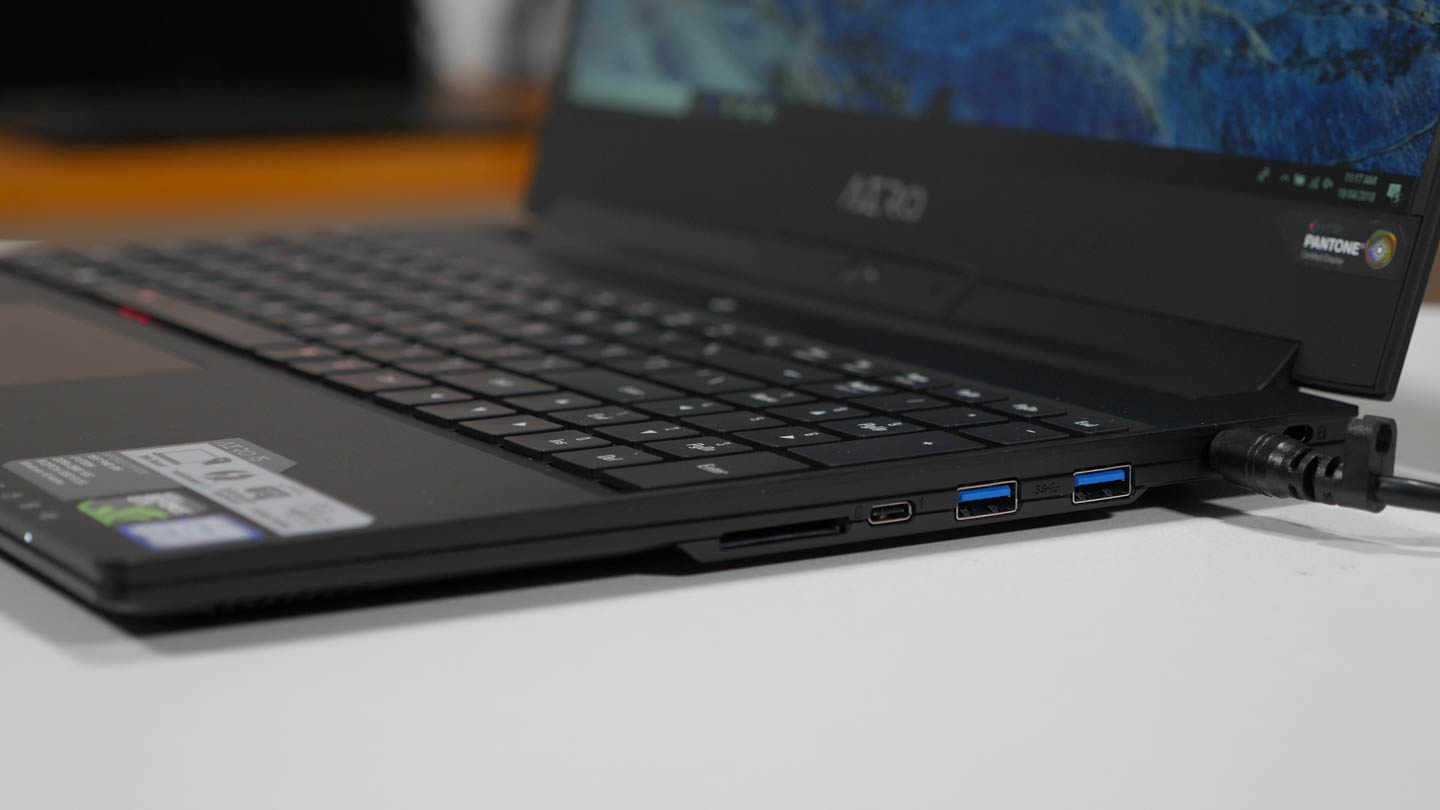Today we're taking a closer look at the Gigabyte Aero 15X (2018 model), which was launched alongside Intel's new H-series Coffee Lake processors a couple of weeks ago. Bringing up to 6 cores and 12 threads to the laptop form factor, we've covered the new CPUs in depth already, so now our focus is on Gigabyte's latest premium laptop.
We looked at the original Aero 15 last year and were pretty impressed with most aspects. The Aero 15X is not a massive departure from what we had before, but we there are hardware improvements and other changes that help refine the laptop. And Gigabyte is key to stress this isn't just a gaming laptop, but a machine designed for productivity, and that shows with features like an X-Rite certified display.
Central to this 2018 refresh is the Intel Core i7-8750H, which brings six cores to laptops for the first time and presents a decent upgrade over the older quad-core Core i7-7700HQ, particularly for productivity. The GPU options stay the same: a GeForce GTX 1060 in the base model and a GTX 1070 Max-Q in the Aero 15X version we're looking at today. The SSD is still 512GB and we get a single 16GB stick of DDR4.
Another key improvement is the new 15.6-inch 1080p display. This new panel will no doubt be used across a wide range of laptops, as it provides a 144 Hz refresh rate for the first time at this size. Previously we were limited to 120Hz on most laptops, so the 24Hz increase is nice for those who like gaming at the upper end of frame rates.
You don't get G-Sync with this laptop, which I thought was a little strange though it's likely to keep costs down. G-Sync would have improved the smoothness of games, particularly when running below 60 FPS, but provided you are pushing into the 80+ FPS range, not having adaptive sync isn't a massive issue.
In fact, let's talk a bit more about this display, because it's one of the more interesting aspects of this laptop.
The Aero 15X has super slim bezels around three of the sides, which makes the overall size of this laptop smaller and maximizes the screen you get in the available space. I really love this sort of design and wish more companies would opt for this type of bezel setup.
It does have a few drawbacks, most notably the webcam position below the display that gives a rather unpleasant angle to your video calls. I don't personally use the webcam very often, so it's not a big deal for me, but anyone that is a frequent user should be aware of this trade-off.
Gamers get to enjoy the 144Hz refresh rate of this panel, but professionals don't miss out at all. The Aero 15X, like its predecessor, is X-Rite Pantone certified, meaning the display is factory calibrated to the sRGB standard. This is important for professionals that demand color accurate displays, and while the calibration is provided through a software profile, it's better than the complete lack of calibration you get with most laptop displays.
Brightness has increased compared to last year's model to around 320 nits, up from 280 nits, and that brings a small increase in contrast. Viewing angles are still quite good, too.
Thanks to calibration, average temperature and gamma are almost spot on, with relatively even performance across the greyscale range. My Aero 15X unit is less accurate than the original Aero 15, at an average greyscale deltaE of 1.62 as opposed to 0.52, but both results are under 2.0 which is pretty good. It's also likely that just one display profile was created for all Aero 15X laptops, so there will be some natural variance between units.
Saturation and ColorChecker results sit at a dE of 2.34 and 2.59 respectively, so again around 1.0 higher than with the original Aero 15. Not as rock solid accurate as I'd like to see, and as we got with the original model, but it's still a pretty respectable result and certainly a lot better than most laptops. Gaming laptops in particular are often fairly inaccurate, but the Aero 15X is good in this regard and provides that extra refresh rate.
The design and construction hasn't changed significantly compared to the original Aero 15. The body is a mix of metal and plastic, with several seams around the place that doesn't give it quite the same premium feel as the best metal-body laptops. The edges in particular are a little strange, though I do like the color options for the lid.
The good news is the body is extremely solid, with basically no flex in any area, even if you're mashing the keyboard. Speaking of the keyboard, once again you get an individually RGB LED backlit keyboard with a solid tactile feel and a handy numpad. I really like how this keyboard feels to type on, so it's perfect for whacking together a Word document, and naturally it's good for gaming, too. The ELAN trackpad is okay, though I'd still prefer a higher-end trackpad with better, more precise tracking.
If you like ports, the Aero 15X has got plenty of them. Three USB 3.0 type-A ports, a Thunderbolt 3 USB-C port, Ethernet, HDMI 2.0, mini-DisplayPort 1.4, a single 3.5mm audio jack, and a fast UHS-II SD card reader.
The Aero 15X's chassis is very portable, at 18.9mm thick and approximately 4.4 pounds (2.0 kg) heavy not including the necessary power brick. It's not the slimmest or lightest laptop I've seen with these specs, but it's more compact, extremely solid, and far more portable than cheaper, thicker gaming laptops. After all, you're paying for the portability, and Gigabyte has delivered.
Amazingly, these sorts of dimensions have been achieved without skimping on the battery, which remains at a huge 94 Wh.
Want to know what's inside the Aero 15X? With a T6 screwdriver and a spudger, it's straightforward to remove the bottom panel, exposing a standard layout. The battery sits at the bottom, while there's a dual-fan cooler with two heatpipes at the top, sending heat away from the central GPU and CPU to the remarkably tiny heatsinks. In the front right corner you'll spot a spare M.2 slot compatible with NVMe and SATA drives, while there's also a free DIMM slot. Yes, the Aero 15X comes configured with single-channel memory.
Considering the extra performance you can get with dual-channel memory, which I'll go through in just a moment, I'd highly recommend grabbing an extra 16GB stick of DDR4-2666 and slotting it straight in. Unfortunately with current memory prices, this could cost you as much as $200, and while it's nice Gigabyte leaves a free DIMM slot for you to upgrade to 32GB, out of the box performance is reduced.






